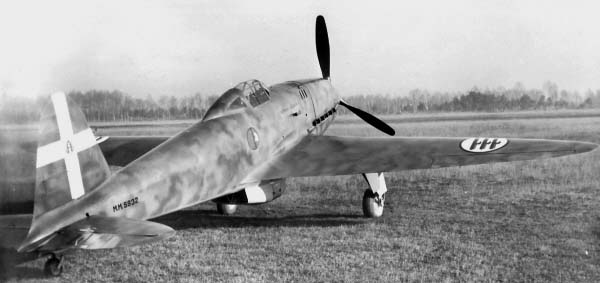Caproni Vizzola F.4
The F.4 was developed in parallel with the Caproni Vizzola F.5, with which it shared a common airframe. Design began in late 1937 by a team led by F. Fabrizi. The aircraft had a welded steel-tube fuselage and a wooden wing; the fuselage was covered with flush-riveted duralumin, while the wing had a stressed plywood skin. Fabrizi and his design team intended the F.4 (standing for Fabrizi 4) to be powered by a 12-cylinder Isotta-Fraschini Asso 121 R.C.40 water-cooled engine rated for 715 kW (959 hp) at 4,000 m (13,123 ft), but the Italian Air Ministry preferred that the Asso not be used in fighters; the F.4 project therefore was halted prior to construction of a prototype in favor of continued development of the F.5, which employed a radial engine.
In the summer of 1939, Italy received its first Daimler-Benz DB 601A—a liquid-cooled inverted V-12 engine rated at 876 kW (1,175 hp) from Germany. This gave the F.4 project a new lease on life, as the Air Ministry approved of its use in fighters. The last of 12 pre-production F.5 aircraft ordered for the Regia Aeronautica (Italian Royal Air Force) was selected for conversion into the F.4 prototype, powered by the DB 601A. It flew for the first time in July 1940.
No further F.4s were ordered, and a proposal to build a production model powered by an Alfa Romeo-built DB 601A as the F.5bis was dropped in favor of pursuing development of the more advanced Caproni Vizzola F.6M.







